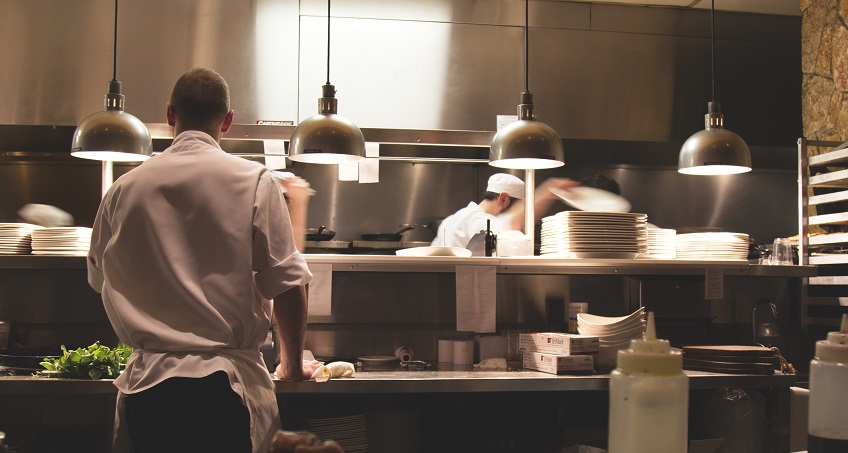
The hub of any restaurant or catering business is undoubtedly the kitchen. While people may spend hours poring over equipment options to guarantee that the business is prepared for anything, often the design of the kitchen itself is overlooked which can have dire consequences for operations.
Getting kitchen layout right is a key element to maximising the efficiency of equipment. All pieces of kit, even refrigeration generate a certain amount of heat and so positioning units in the right site can guarantee that all pieces run to their fullest capabilities. It isn’t just equipment that benefits from considered planning; the kitchen work force could also increase productivity with a fluid cook line in place. With each section flowing to the next in a logical advancement, operations become streamlined and ultimately more productive.
By dividing the working kitchen into sections everyone is aware of their designated area and where things should be. Whatever the size of space you operate from the same rules can be applied either in scaled down or blown up proportions.
- Receiving deliveries; incoming supplies should be accepted in the vicinity of food storage areas so that less distance needs to be travelled when putting things away. Make sure that access to this area is good to cut down on delivery times.
- Storage; with two main types of storage – dry and cold – this is where your ingredients will be kept. The size and type of storage you invest in will be determined by the area you have available and the covers you deal with on a daily basis. The style of food you specialise in will influence the type of storage you require. Whether you need freezers, refrigeration, cold rooms or roll in equipment etc. alongside your dry stores, all units will belong in this section.
- Food preparation; positioned in the vicinity of the storage areas the time spent retrieving ingredients during prep is minimised. When you consider the number of times staff will need to visit dry and refrigerated storage areas, having the prep area close can save significant time throughout the course of the day. The food preparation area may also feature small prep and cooking equipment.
- Food production; this is where all the minor elements come together to create the main event. The production section is undoubtedly hot with commercial ovens, ranges and griddles etc. all being operated simultaneously. It is vital to site this area as far away from any refrigerated storage as possible. The intense heat results in refrigeration having to work harder to maintain low temperatures reducing overall longevity, performance and efficiency of equipment. Understandably when things get busy chefs can’t keep running to cold storage to pick up ingredients and thanks to the advancements in refrigeration they don’t have to. Equipment is now available which is designed to hold essential refrigerated items at optimum temperatures even when positioned near the cook line. Take a look at the Adande VCS1 Chef Base Unit Hot Cookline Application designed to hold low temperatures even when surrounded by hot cooking equipment. Such units are also ideal for food preparation areas.
- Service; positioned next to the production area, close to the front of house, the time taken between food leaving the cook line and reaching the table is minimised.
- Dishwashing and cleaning; this is the point where all dirty plates, utensils, pots and pans arrive once used. Housing sinks and dishwashers etc. this area should be located away from the food preparation, food production and service areas for hygiene and food safety reasons. Cleaning tools and chemicals can be stored in this section secured in a cupboard and out of the way.
- Waste; situated strictly as far away as possible from all other kitchen operations for obvious health and safety issues, the waste area should be kept clean and uncluttered to reduce any potential pest problems. Obviously this waste area shouldn’t be near the delivery section.
Instead of rigid boundaries between each main kitchen section try to imagine areas blending into the next seamlessly and with fluidity, maximising efficiency, productivity and overall performance. Not only will your kitchen thrive but correct planning and design will help your refrigeration and catering equipment reach old age.

Leave a Comment
Your email address will not be published. Required fields are marked *